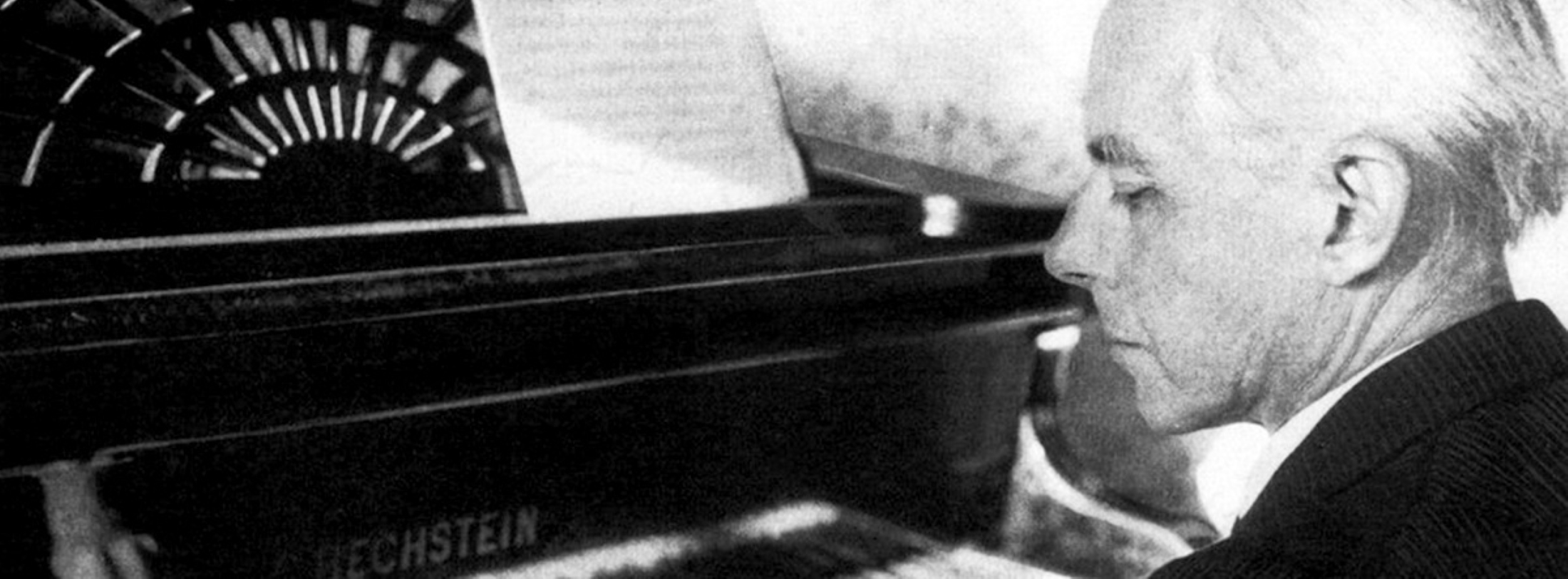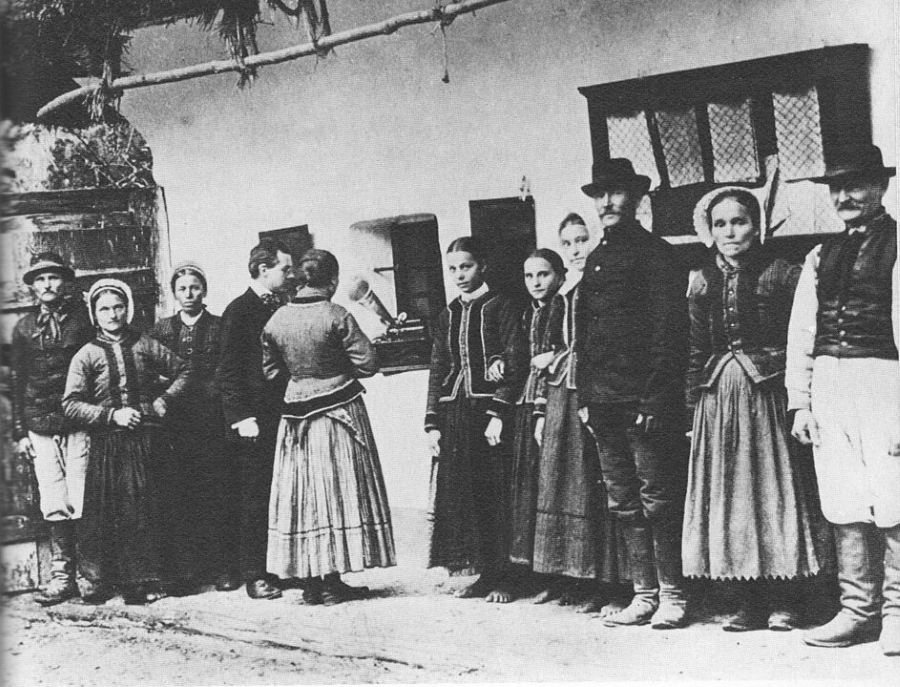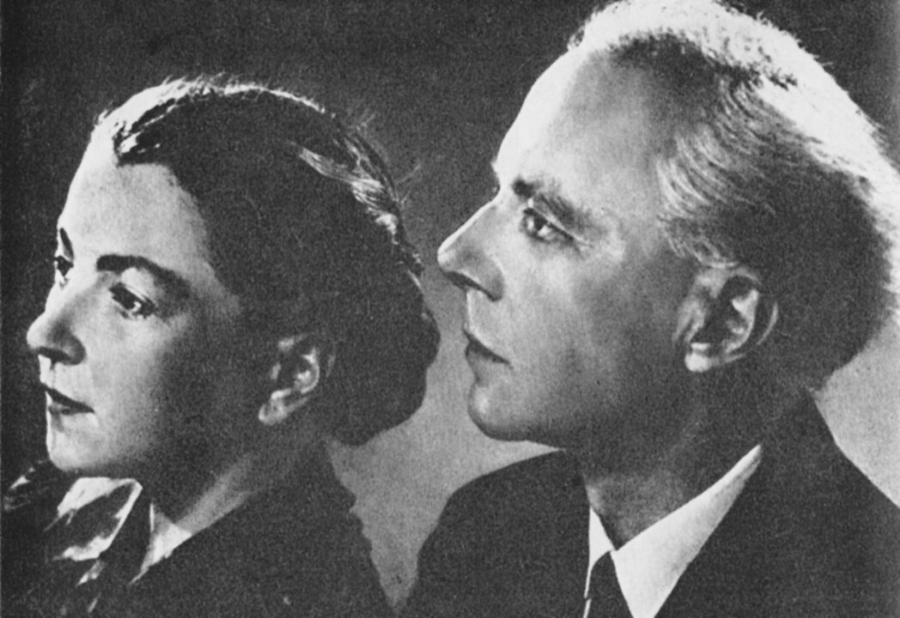
The life and legacy of Béla Bartók
Bela Bartok’s fight for a beautiful life
Bela Bartok is one of the most well-known composers of the twentieth century, on a similar stance to Franz Liszt, he remains one of Hungary's greatest composers. Bartok's legacy is so great that it includes most genres of classical music: 3 major stage works (one-act opera and 2 ballets), a symphony, symphonic suites, cantata, 3 piano concertos with orchestra, 2 violin concertos, one for viola, a multitude of compositions for solo instruments and chamber music (including 6 string quartets). All his masterpieces are saturated with gloomy and tragic collisions of their time, the complexities and inconsistencies of the spiritual world and life’s big existential questions. The rapid development of the artistic culture of that era also left its mark on his work.
Bela Bartok was born in Nagyszentmiklos (present-day Sannicolau Mare, Romania). A childhood spent in the countryside became the foundation for the future composer's life. The musical talents of the little boy began to appear very early. At the age of 3, he tapped out rhythms on drums and with one finger he could play by ear all the folk songs he heard and the music that he overheard in the village. Noticing his son's ability and attraction to music, his mother began to study the piano with him, because she was already a very experienced pianist. Later, their father, who played the cello, also joined their duet. And perhaps those were Bela's most wonderful childhood memories. As he writes in his letters, things drastically changed for the boy,
Childhood ended in 1888 when my father suddenly died.
From this period, his life with his mother and sister Erzsebet changed a lot.
Life after the death of Bartok’s father
They moved from one village to another, leaving behind the love of a strong family home, yet counteractively filling themselves with the music of the people they met on these travels. At 9 Bartok started writing the music. At 11, in one of these villages, he played his first solo concert, where, by a lucky chance, there was a philanthropist among the listeners. He noticed the boy's talent and organised his education at the Budapest Academy of Music, where Bartok began studying with a student of Franz Liszt, Istvan Thoman. During his student years, he performed with great success as a pianist.
At the same time, his formation as a composer began. In the early works, one can feel the influence of his favourite composers at that time: I. Brahms, F. Liszt, R. Wagner and R. Strauss. After a brilliant graduation from the Academy of Music, Bartok began his concert tour to Western Europe.
 Béla Bartók
Béla BartókBartok’s travels and search for sound
Bartok's active concert life at that time was associated with such countries as Germany, Austria, Switzerland, Spain and Portugal. By the way, in 1905 he took part in the A. Rubinstein competed in the French capital as a pianist and composer. From that moment, Bela began to study folk music more and more deeply. However, the composer was attracted not only by folklore, despite the difficulties in learning languages, he was fluent in five languages (Spanish, French, English, Hungarian and German) and later on visited many Balkan countries, including Ukraine with an ethnographic expedition (for the purpose to make contact with the Slavic culture), Turkey and some Arab countries. These travels marked the beginning of his scientific and folkloristic activity, which continued until the last days of his life. It’s safe to say his life was both rich in music but also in travel, he took snippets of influence everywhere he went.
Did he find a place to settle?
The end of 1907 was marked by his teaching occupation at the Royal Academy of Music (now named after F. Liszt). It was during this period that Bela Bartok formed his signature style as a composer. The innovative approach in the compositions was based on the inspiration of the great polyphonies of Bach, the genius symphonies of Beethoven and the beautiful harmonies of Debussy. The first success was brought by a small piano piece with an unusual name “Allegro Barbaro”. This original work caused such a public outcry that the name of the composer instantly gained fame. In the same year, 1911, together with their friend and former classmate of the Budapest Academy of Music, Zoltan Kodály, they created the Hungarian Musical Associations intending to popularize folk music. A little later, he again goes on a creative expedition to the settlements of Algeria. On his return to Paris, he negotiates the publication of all his studies in his early years.

The dark clouds for the First World War
At this time, the very dark clouds of the First World War hung over the world. Even though Bartok was anti-military in his views, he and his friend Kodaly were obliged to serve in the musical division of the press department. During this period, he began to work on the ballet "The Wooden Prince". In 1917, immediately after a resounding success, he was invited to the Directory to deal with cultural issues, which at that time had already become the Soviet Republic of Hungary. In his worldview, Bartok agrees, not belonging to any party, hoping in the best way to influence the cultural situation in the country. During the same period, he creates one of his most significant works, the avant-garde ballet "The Miraculous Mandarin". But in August of the same 1919, rapid changes led to the collapse of the Soviets and the power in the country was seized by the fascist dictator M. Horthy. Here, the most difficult times for Bela Bartok began.
Bartok’s fight back
Attacks from the ruling authorities because of his political position, the persecution of the composer in the press by reactionary nationalists, the indifference of the general public to his original and innovative music, as well as his bold refusal to perform in Germany for the fascist regime and decisive speeches against fascism in defence of culture and democracy - all this greatly undermined the psychological and physical health of the composer. In one of his letters to his mother, he writes:
Every person, having reached maturity, must find an ideal to fight for him, to devote all his strength and activity to him. As for me, all my life I will serve one goal: the Hungarian people, and people who want change through music and art.
His style is noticeably evolving, dominated by tension, and the rigidity of the musical language. He continued to fight the regime and at the same time make a tour among the typical population, but in 1940 he decides to emigrate to the United States with his wife Ditta Pasztory and two sons. After arriving by a steamer from Lisbon they settled in New York City. Right after the younger son, Peter Bartok enlisted in the US Navy, where he served in the Pacific during the remainder of the war.
 Béla Bartók with his wife Ditta Pásztory-Bartók
Béla Bartók with his wife Ditta Pásztory-BartókBartok’s fight for his health
At this time, he went through some real mental health problems with an obvious lack of spark and creative activity. He was separated from everything he knew, and in some ways, it’s no surprise that he then got very sick. The composer was stroke with a serious illness that no one could have pre-empted - leukaemia, which soon after he died. Although he became an American citizen, Bartok never felt fully at home in the United States. So, he was happy to meet friends from the Budapest Academy again. Violinist Joseph Szigeti and conductor Fritz Reiner supported him to finish all the masterpieces he has begun and recorded with Columbia Records (who made some recordings in Hungary earlier). He fought right up until his last breath, even when his body slowly failed him, he took on a commission by Yehudi Menuhin to write a Sonata solo Violin. And the very last Piano Concerto #3, a graceful and almost neo-classic work was written as a surprise for his wife Ditta's birthday, even though he died just over a month before.
The symphony of his life
Bartok's art was a mix of contrasting principles: deep feelings and strict intellect, expressiveness of melodies and renunciation, impulsiveness of phrases, but clarity of mind. He gravitated toward conflicting drama, Bartok was not at all alien to either lyricism, the simplicity of folk music, or refined contemplation with philosophical views.
In the words of his best friend Kodály,
The name of Bela Bartók is a symbol of great ideas. The first of them is the search for absolute truth in art, which rises above all human weaknesses. The second is impartiality towards races, peoples, cultures, and languages - mutual understanding and brotherhood between peoples. Finally, his ideas mean spreading the beneficial influence of music to the widest strata of the people.
Want to read more? Find out about the cities that have inspired your favorite novels.
Photo Credits: Wikipedia Commons
